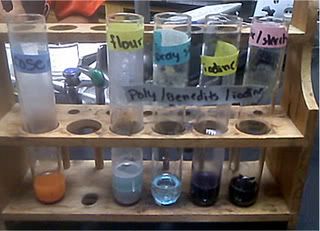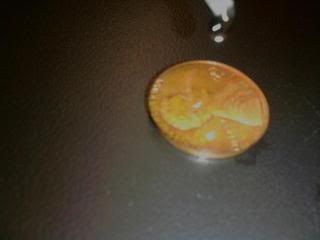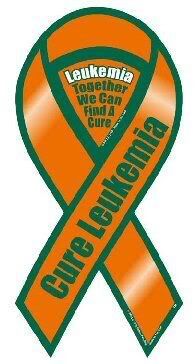For our Green Human Project, there wasn't really a lot to it. We simple decided that if there was in any way possible to get humans to somehow absorb light like a plant, we'd be all good! But, we know scientifically at this point there really is no way, so we'll just pretend we had the technology and did exactly what our slide, above, said! :) There would of been a little more detail, but sadly we didn't have enough time to complete all the requirements. Hope you enjoyed anyways! :) OH! And hope you liked our description, show in a photo in the slideshow, of what a green human would look like! :)
Thursday, December 16, 2010
Wednesday, December 8, 2010
Fluid Mosaic Diagram
For our fluid mosaic diagram my group and I were trying to show you what a fluid mosaic looks like exactly. We tried to put as much detail into it, as well as information. All parts that our listed are: The Oligosacchairde, Glycolipid, Hydrophobic helix, Cholesterol, Phospholipid and and where two types of Integral Proteins are. Like the whole class, we found out specific things about that diagram that you might find interesting, and those are listed below. They might not be the most interesting facts, but hey what else can you do when you leave it up to David to actually do something in the group? :) Anyways, as I was stated previously what we were getting at was trying to help you understand what we understood about it, and we hope the poster really helps! We didn't make it so pretty for nothing! :)
1.) What do oligosaccharides do?
-Oligosaccharides are carbohydrates that are attached to the protein that makes up the membrane of a cell. These are used as little antennas to communicate with other cells, as well as identify them. 2.) What kind of proteins make up the membrane of a cell?
-There are multiple types of cells that make up a membrane; there are receptor proteins, marker proteins, transport proteins, peripheral proteins.
3.) How thick is the membrane?
-They range any where from 7.5 - 10 nanometers.
Monday, October 25, 2010
Proteins Diagram
Recently, while using only a cup of cereal and a long piece of string, I constructed a diagram of a protein. I took each fruit loop individually and, and random, filled up the string. When I was finished we had the option to either tangle it up, or mix it with two other classmates of mine. Either way this would of been a diagram of some kind of protein. I decided to go with the two other classmates and we combined all three of our diagrams by braiding all three of our string of fruitloops together. We ended up constructing something, of what Mr. Lugwig said, looked like a structure of cartilage. The diagram ran together in a clear braid, but the fruit loops were all mixed up which was a perfect example of what a real protein form would look like. Here was the end result! :)
Wednesday, October 13, 2010
‘Dead simple’ way to see atomic structure
Recently, I read an articel entitled, "‘Dead simple’ way to see atomic structure". It explained how scientists used a sheet of carbon, or one atom thick, researchers devised a new technique to have a more visual picture of the structure of molecules. What they were going for was to obtain the first direct pictures of how water coats surfaces are at room temperature and how they can be used to come up with some kind of image of a potentially unlimited number of other molecules. They wanted the image to include antibodies and other biomolecules.
James Heath, a professor of chemistry at the California Institute of Technology said, “Almost all surfaces have a coating of water on them, and that water dominates interfacial properties” and “in constant flux, and don’t sit still long enough to allow measurements.” Professor James Heath really was only explaining how hard it was to study because interfacial properties affect the wear and tear the surface and also the water molecules don't stay still enough for them to actually sit there and study them.
Amazingly, Professor Heath and his colleages ACCIDENTALY came down with a technique to pin down the moving molecules. Heath and colleagues captured and trapped the water, after they thought the anomalies might be water, under the graphene. He said, “It was a happy accident—one that we were smart enough to recognize the significance of. We were studying graphene on an atomically flat surface of mica and found some nanoscale island-shaped structures trapped between the graphene and the mica that we didn’t expect to see.”
The researchers did experiments where they deposited the graphene sheets at varying humidity levels. At higher hjmidity the odd structures became more prevalent but disappeared when in completely dry conditions. This lead the researchers to believe that they were water molecules covered by the graphene. They realized that the graphene sheet was “atomically conformal” which meant it warpped around the water molecules tightly enough to reveal their detailed atomic structure. All of this was examined with atomic force microscopy though.
Still continuing with the technique researchers have learned new details about how water coats surfaces. They found out that the first layer of water on mica is really two water molecules thick, and has the structure of ice. Once that layer is fully formed two molecule thick layer of ice forms. On top of that you get droplets. Now, the researchers are working on improving the resolution of the technique. By doing this it could be used to send out a better picture of the atomic structure of biomolecules like antibodies and other proteins.
James Heath, a professor of chemistry at the California Institute of Technology said, “Almost all surfaces have a coating of water on them, and that water dominates interfacial properties” and “in constant flux, and don’t sit still long enough to allow measurements.” Professor James Heath really was only explaining how hard it was to study because interfacial properties affect the wear and tear the surface and also the water molecules don't stay still enough for them to actually sit there and study them.
Amazingly, Professor Heath and his colleages ACCIDENTALY came down with a technique to pin down the moving molecules. Heath and colleagues captured and trapped the water, after they thought the anomalies might be water, under the graphene. He said, “It was a happy accident—one that we were smart enough to recognize the significance of. We were studying graphene on an atomically flat surface of mica and found some nanoscale island-shaped structures trapped between the graphene and the mica that we didn’t expect to see.”
The researchers did experiments where they deposited the graphene sheets at varying humidity levels. At higher hjmidity the odd structures became more prevalent but disappeared when in completely dry conditions. This lead the researchers to believe that they were water molecules covered by the graphene. They realized that the graphene sheet was “atomically conformal” which meant it warpped around the water molecules tightly enough to reveal their detailed atomic structure. All of this was examined with atomic force microscopy though.
Still continuing with the technique researchers have learned new details about how water coats surfaces. They found out that the first layer of water on mica is really two water molecules thick, and has the structure of ice. Once that layer is fully formed two molecule thick layer of ice forms. On top of that you get droplets. Now, the researchers are working on improving the resolution of the technique. By doing this it could be used to send out a better picture of the atomic structure of biomolecules like antibodies and other proteins.
Tuesday, October 5, 2010
Carbohydrate ID Lab
In the Carbohydrate Lab we used Flour, Starch and a poptart. For the larger amount of the lab we used Iodine. All but one time did the results come out that they were all Poly. Even when we boiled some and didn't with others, Poly was the overall winner of our lab results.
Lab Results:
Glucose + Benedict = Mono (Boiled)
When we mixed these two together the glucose turned orange after we boiled it for about 3-5 minutes (First from left in photo)
Flour + Benedict = Poly (Boiled)
When we mixed these two together half of it turned into a light blue, while the other side remained white, but a darker shade (Second from left in photo)
Starch + Benedict = Poly (Boiled)
After mixing these two together they turned into a very light blue that was almost see through (Third from left in photo)
Iodine + Starch = PolyIodine + Flour = Poly
When we mixed these two together all it did was turn black.
When we mixed these two together all it did was turn black.
Poptart + Benedict = Poly (Boiled)
There was no reaction even when boiled. It just looked like floaters. (Not in photo)
In conclusion we learned that all Carbohaydrates have monosaccharides and sometimes get put together into BIGGER chains called Polysaccharides.
Tuesday, September 21, 2010
Acid in your Stomach
\
PH Lab Concepts:
During this lab we learned that Antacids are medicines that work by increasing the pH balance in your stomach. A lot of antacids can quickly take care of symptoms like heartburn and indigestion. Antacids are able to make you feel better by increasing the pH balance in your stomach.
PH Lab Concepts:
During this lab we learned that Antacids are medicines that work by increasing the pH balance in your stomach. A lot of antacids can quickly take care of symptoms like heartburn and indigestion. Antacids are able to make you feel better by increasing the pH balance in your stomach.
The pH system is a scale for measuring the acidity or alkalinity in your stomach. The scale goes from 0 to 14. A pH of 7 is neutral, below 7 is acid, and above 7 is an alkaline. In order for an antacid to actually act fast, it has to get up to 3 or 4 just so it can handle everything happening in your stomach.
We tested all of these products and the Tums® can out to be a 5, which was really good. In the vinager it bubbled and fizzed, then flatened out. It showed us how powerful it components really were. The Rolaids® stayed at a 3 on the pH level. It foamed up, and remained like that. It wasn't as potent as the Tum obviously. We also tested two different types of Antacid Tablets. Both remarkably had a pH level of 5, but only one fizzled like the Tums®, while the other had no reaction and just mix with the water, it just kind of floated around. Either way, all of these products were made to balance out the pH in your stomach. Some products may be thought to work faster and better because of the brand, but in the end they are all created for the user and each had almost an equal amount in pH levels.
Wednesday, September 15, 2010
Penny for Thought?
For a project in Biology we did two experiments. One was to see how long you could get water to travel down a piece of string from one beaker to the other, and the other was to see how many drops of water you could get onto a penny until the water I guess you can say "overflowed". I watched as a couple of my classmates did the first experiment. I guess they were going for a world record or something because the piece of string was quite a distance between the beakers. Funny as that sounds, and as entertained as I was, I actually found the experiment interesting. I knew that water could travel down the string, but I didn't know that it could travel on a very long piece. It showed me how complex water can be, and what different shapes it can form into to adjust down the string.The second experiment caught my attention more though. Brianna and I were lab partners and tried to beat each other out by trying to get the most drops on the penny. I don't know if I was having an off day or what, but lets just say Brianna beat me by a lot (30 to be exact). Mr. Lugwig commented that they must have been some pretty small drops because there was no way that we could get 80, but it was okay. What really surprised my during the experiment was that the penny actually held more water droplets on it than alcohol. I figured since the alcohol was thicker the cohesion would help it on the penny, but that wasn't the case. Water has an unique way of formatting itself onto the penny because of it's density and the adhesion it had, something that the alcohol couldn't do. I guess this is due to the surface tension though. I found this experiment to be really enlightening. Now when I think of water it'll give me a whole new outlook on on I perceive it :)
Tuesday, September 7, 2010
The deadly L word
Subscribe to:
Posts (Atom)




